Weighted Blanket Fillers – Best Fillings To Choose
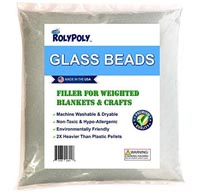
Whether you want to make your own weighted blanket or buy an already established brand product, there is always one question in mind – what fillers to use and what is the best option out there. Weighted blanket fillers are utterly important – you have to be careful what goes on in your bed. You can’t afford to allow any toxic substances near the place where you spend over 30% of your day.
There are so many things to consider when choosing the filler for your weighted blankets – price, availability, toxicity and why not ever whether you’re buying an organic product or not? Whether you care for the environment and so many other questions – what size to choose, how many fillers I’ll need to achieve the weighted I am after and all that.
Fear not – we did the hard work for you!
Let’s take a look at the most commonly used weighted blanket fillings, what could be the best choice if you’re going the DIY route and pretty much everything in between.
What Are The Best Weighted Blanket Fillers?
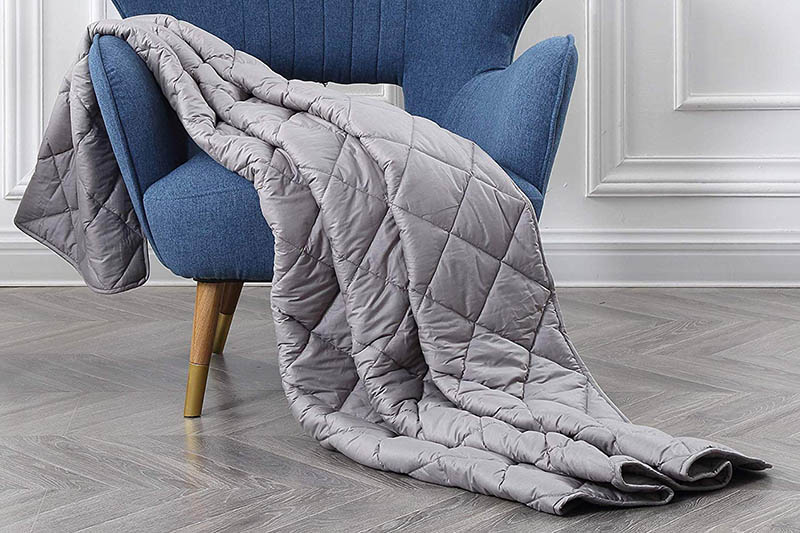
Glass beads and poly pellets are by far the most popular fillers for weighted blankets.
They are featured in one way or another in every company-made weighted blanket on the market today with a few exceptions.
Most reputable (read expensive) companies only use glass beads (for good reason too) and you can find poly pellets on most of the cheaper, budget options.
Let’s take a look at the most popular fillers to use for weighted blankets on the market today:
1. Plastic Poly Pellets – The Most Popular Option
One of the most popular fillers for weighted blankets are poly pellets. These small round pellets are usually made from the so-called ‘ABS virgin plastic.’ They have a variety of advantages – they are easy to clean, do not give off harmful chemicals, and are usually hypoallergenic, but we’ll get to that in a second. They are also tough and usually last a really long time.
However, they may give the blanket an uneven texture, and they can be noisy when the blanket is used. there is also the fact that people are trying to move away from the use of plastics due to environmental concerns.
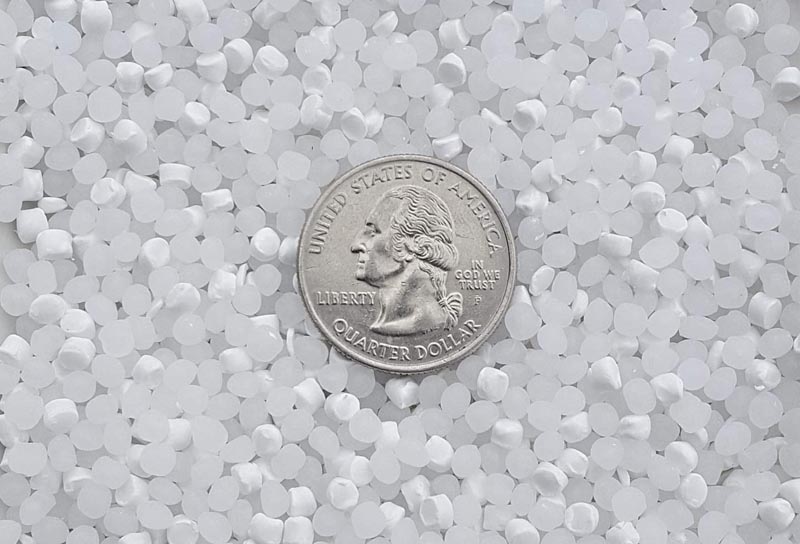
Quite a few downsides of poly pellets:
First of all – there is no proper control on manufacturers and all these Chinese suppliers about what plastic is used in these pellets and whether they’re safe for home use and most importantly – to sleep under for extended periods of time.
Never ever buy pellets that are not clear about their origin and don’t have a “material safety data sheet”. If you spot some on the market that doesn’t have an MSDS most likely they’re either grey imports or something worse. Just avoid – you don’t want the trouble.
Second of all – they do claim that poly pellets are non-toxic but I would personally avoid them if you have any issues with plastics and other oil-made materials before. Again – just not worth the risk, it is still plastic.
Third, and probably the worst, cons of poly pellets is the environment. Poly pellets do now decompose naturally and if not recycled they are a danger to wildlife and sealife. Please be responsible if you decide to go for poly pellets – recycle them responsibly when disposing of them.
Where To Buy Poly Pellets For Weighted Blankets?
Here are the best options for Poly Pellets from Amazon – reputable sellers and 100% made in the USA:
Let’s take a quick look at all the pros and cons of poly pellets:
Pros Of Poly Pellets | Cons Of Poly Pellets |
| 1. Cheap And Easy To Source | 1. Uneven Blanket Texture – Possible Clumping |
| 2. Easy To Clean | 2. Unpleasant Smell |
| 3. Durable | 3. Danger to wildlife, pets, and kids |
| 4. Bad For the Environment | |
| 4. Potentially Toxic |
2. Micro Glass Beads – The Best Choice
Probably by far my favorite option. The only problem with glass beads for weighted blankets is the price of the beads and the amount you need to fill a good size blanket.
Glass beads for weighted blankets are about the same size as the Poly pellets but they’re much denser than plastic hence you need a lot less glass to achieve the same weight as poly pellets. They have a much smoother and finer texture than plastic beads and are far more resistant to “clumping” of the blanket compared to most other options on this list.
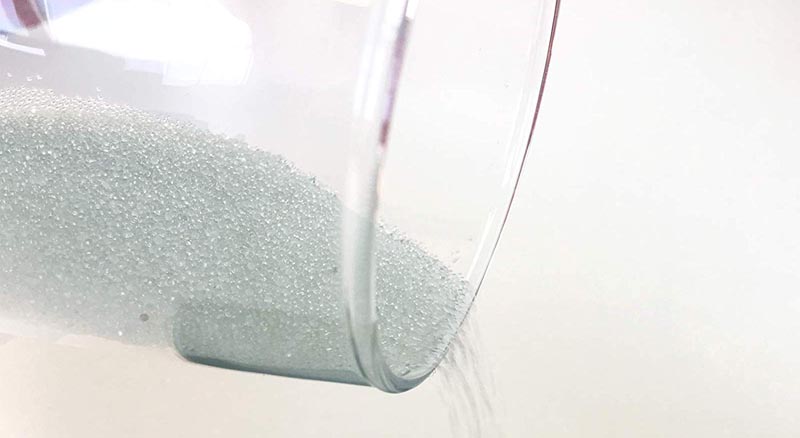
Also, glass beads are 100% natural – they are made of glass which is, in turn, made from sand and limestone. Glass is the most hypoallergic element on this list so if you have any skin problems or allergies, especially ones related to oil products and plastics, glass beads are the top choice and not wonder some of the top brands of weighted blankets use them as a filling.
Another major advantage of glass beads is the environment (yes, I know I’m starting to sound like a broken record…). Glass is almost 100% recyclable, and a lot less energy is used to produce and recycle glass compared to any plastic options and most of all – glass can be recycled almost endlessly without any loss of quality or performance. How cool is that?
The only possible downside of glass beads compared to poly-pellets in terms of weighted blankets is the price. Yes, you guessed it, glass is a bit more expensive than plastic. A bit more difficult to care for as well, but that’s not really a major downside.
Where To Buy Glass Beads For Weighted Blankets?
Let’s take at the most prominent pros and cons of glass pellets for weighted blankets:
Pros Of Glass Beads | Cons Of Glass Beads |
| 1. Non-Allergic and Non-Toxic | 1. Higher Price Than Plastic |
| 2. Machine Washable | |
| 3. 100% Recyclable | |
| 4. Earth Friendly | |
| 5. 100% Natural |
3. Edible Weighted Blanket Fillers
Yes, there is such thing as edible weighted blanket fillings and they fall into two major categories:
1. Beans
You might be amazed to find out that lots of people are actually using edible bean fillings to make their own heavy blankets. It is a great alternative to plastic, for example, but there are quite a few caveats here.
First of all – make sure the grains are DRY. I can’t stress this enough.

Let me say it again – make sure your beans are dry before using them in your bed!!!
There is a reason for that, don’t worry – beans that haven’t been dried properly before use can bring all sorts of health problems right where you don’t want them – in your bed, while you sleep. We’re not even talking about live organisms that might be still living within them like bugs and such. I’m talking about the almost unlimited potential for mold and mildew developing in your bed – gross!!!
Also, beans are not really an ideal solution for a weighted blanket either – when they’re dry they can’t really provide accurate weight distribution or enough actual weight for a proper heavy blanket. Also, while they will absorb any moisture or sweat during the night, they will be completely impossible to clean without throwing the whole batch away.
Also, beans decompose over time. Mix that with any moisture accumulation and you have the potential for a swarm of bugs and molds growing right within your comforter.
Pros Of Beans | Cons Of Beans |
| 1. Cheap to Acquire | 1. Hard To Clean Or Dry (Impossible Even) |
| 2. Magnet For Bugs And Mold/Mildew | |
| 3. Not Healthy |
2. Other Edible Food Fillings
Quite similar to the beans filling above, lots of people have tried using other edible weighted blanket fillings in the past.
I don’t understand why anyone would like to do this, but still, if you want to use an organic filler for your quilt, then you can use dry pasta, barley, rice or other dry grains. They all are available in every convenience store, and they are cheap.
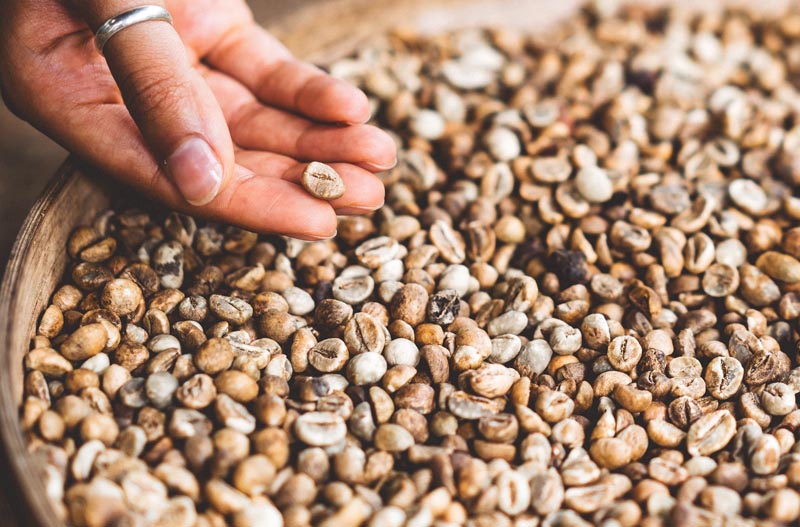
But the real question is, should you use edible food filling?
Well, it depends on your purpose. If you are just experimenting, then it’s perfectly fine. Just like the beans above – make sure that anything you use as a filler is thoroughly dried.
If you are serious, then you are going to face some real pain in managing your quilt filled with organic edible foods.
The biggest issue with any organic product is that they decompose with time. The decomposition rate increases significantly when they come in contact with any liquid, especially water or sweat.
The second issue is that they aren’t water-resistant. Once it starts accumulating moisture the mold will come. You don’t want that in your bed – trust me!!!
Pros And Cons? Pretty Much The Same As Beans
4. Other Organic Fillers
Let’s take a look at other types of organic fillers for weighted blankets that are available to use in the DIY circles:
1. Aquarium Gravel
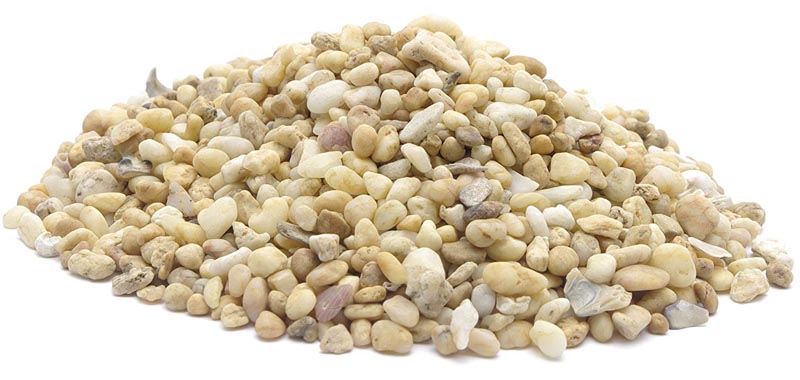
Aquarium Stones are a lot more similar to glass beads than poly pellets. It is an organic material that is relatively easy to acquire, it doesn’t harm the environment and it is non-toxic by any means.
So is it a suitable weighted blanket filler material?
I’d say yes with a few downsides.
The first one is weight distribution. Aquarium gravel is not consisting of round pebbles for the most part so chances are all these tiny stones will roll around and go towards the edges of the blanket/pocket as you sleep.
The second one, unless enough cushion is added, won’t be very comfortable – for the same reason above – they’re not around for the most part. Also, aquarium gravel tends to be a bit harsh on the fabric of the blanket – it wears it a lot quicker than nice and round pellets.
Another negative is that they are a lot more likely to develop mold over time compared to glass or plastic pellets. Stones for aquariums are usually not treated for any bugs or live organisms either so be careful using them in your bed.
The main pro of them is that they’re heavier than all edible fillings combined so you will need a lot less gravel compared to beans and grains. Also, it is relatively easy to clean but pebbles might heat too much in a dryer – I’d avoid machine drying them.
Pros Of Aquarium Gravel | Cons Of Gravel |
| 1. Cheap to Acquire | 1. Not Round – Sharp Edges |
| 2. Organic | 2. Possible Mold Issues |
| 3. Not Even Weight Distribution |
2. Steel Shot Beads
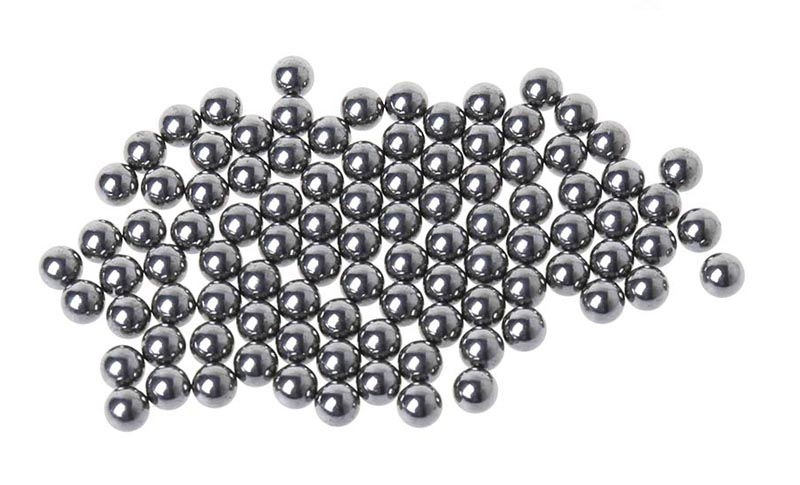
Steel shot beads can actually be quite an adequate alternative to glass beads for weighted blankets. They are similar sites to pellets and beads and share one very important property – they are smooth and round.
The main difference here is the steel’s weight. Because of their weight, steel shot beads are hard to use in a weighted blanket without making it way too heavy to use. If you use too little there will be quite uneven weight distribution. If you use too much your blanket will weigh a ton. No, literally, those are heavy!
On the other hand, steel is notoriously hypoallergic and non-toxic for most people.
It is really easy to clean and it doesn’t absorb moisture like some of the edible fillings mentioned above.
Another pro of steel beads is that most of the products sold on the market are heat-treated to make them durable, rust-prone, and chemically resistant. They are super durable as a filler but it comes with their quirks.
Pros Of Steel Shot Beads | Cons Of Steel Shot Beads |
| 1. Very Cheap For The Weight | 1. Very Heavy |
| 2. Organic Material | 2. Potential Rust Issues |
| 3. Very Durable | 3. Uneven Distribution |
3. Sand

Sand, at least on paper, looks like an acceptable weighted blanket filing on paper.
That’s until you look deeper into its pros and cons and see the whole picture.
The first major downside of sand is that, for the most part, it is not 100% organic. Sand mostly consists of silicon dioxide and other non-organic materials which can be toxic to some people’s skins and cause major irritation. It can be a major health concern if not sourced from a reputable source as well. If you have any allergies or skin issues please avoid using sand in your bed at all costs – it is just not worth the risk.
Also, sand can be very difficult to contain within any fabric, no matter how high the thread count is. You must remember how whenever you go to the beach for a week and then there’s sand all over the place for months and months – found at the most impossible places. It is hard to contain.
When washed chances are sand will leak out of any organic fabric – cotton, silk, or bamboo. You just simply can’t contain the fine particles unless you use plastic to wrap them.
Also, sand spreads unevenly and it tends to clump together when moist leading to very uneven weight distribution. To add to that, and expands when wet so it can tear the blanket apart if there is not enough room left in the fabric.
Overall, sand is not an ideal filler for a weighted blanket – just not worth the hassle.
Pros Of Sand | Cons Of Sand |
| 1. Dirt Cheap | 1. Can Cause Allergies And Health Issues |
| 2. Hard To Clean | |
| 3. Near Impossible To Contain |
4. Beach Pebbles – Smooth Riverstone
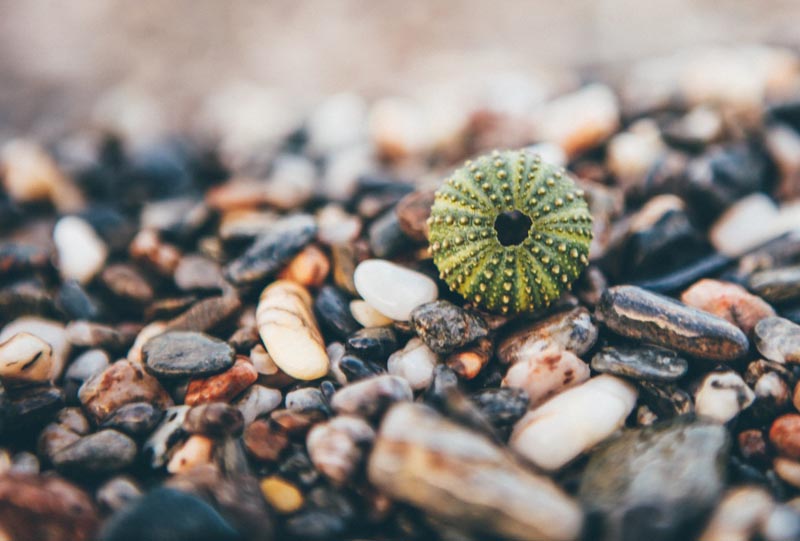
Beach pebbles, in theory, can be used as a weighted blanket filler.
But then again, why would you want that?
First of all, it’ll take AGES to collect all the small and smooth pebbles that can be suitable as a filling.
Second – they’re not that round and comfy. They will be terrible at retaining heat and God knows where they’ve been. Cleaning them all, drying them, and then stuffing them in your bed doesn’t sound like a great idea, to be honest.
Yes, they will probably provide the most weight per volume, especially compared to plastic, but they will be large and lumpy for the most part.
Also, weight distribution will be less than ideal unless you take your time and collect the nicest, small and oval pebbles you can. That will take a tremendous amount of time – if you have it – kudos to you!!!
Another added negative is noise. Pebbles, even the smoothest of them all, can be quite noisy in a blanket. They are not suitable for people with sensory and auditory sensitivities.
Overall, I don’t really think beach pebbles or river stones are suitable materials for weighted blanket fillings.
Please Be Careful About Toxic Chemicals, Allergens, And Mold Issues!
Please be aware that choosing the wrong filler for your weighted blanket can severely damage your health and well-being!
We already covered all the dangers and non-sense of edible fillers, but what about some of the popular choices?
Let’s take a look at the most popular filler on the market today – poly pellets. Do you know what “Poly” stands for?
Well, “Poly” is short for Polypropylene – it is a chemical compound that is made by chain-growth polymerization of propylene. Yeah, doesn’t sound too “natural” and “healthy”, does it?
While there are lots of claims of non-allergic and non-toxic polypropylene – it is still a chemical product, basically made of plastic.
It is not something you’d want to sleep under if you have any allergies or skin reactions to plastic products. As with all non-organic products, there is always a risk of developing skin reactions and health issues – just make sure you always know what you’re getting.
Most commercially sold plastic fillers for weighted blankets tend to be heavily regulated and thoroughly tested before approval. If you decide to go the plastic route just make sure you’re getting poly pellets that are 100% FDA approved and from a reputable seller (like the three recommended above).
Please avoid ordering from dodgy Chinese suppliers – you never know what you’re going to get, it is simply not worth the risk in my opinion.
Final Words

I really hope that after reading this article you got a better idea of what fillers to use in your DIY weighted blanket.
Alternatively, I really hope you have a better idea of what filler to look for in your next ready-made blanket.
The undisputed king of fillers is the glass bead. No questions there.
It is 100% non-toxic, hypoallergic and natural. Also, it is 100% recyclable and great for mother Earth.
The poly pellets are a decent alternative if you source them responsibly and you dispose of them even more responsibly.
To sum up all the edible fillers – are just not worth the risk. Avoid at all costs – the price doesn’t make up for the potential health hazards.
The rest of the organic materials are not ideal either – some are too heavy, others too clunky and uncomfortable.
If you have any questions or concerns – please drop me a line below and I’ll see what I can do to help out.
Alternatively, if you feel I’ve written something wrong or you have another suggestion for a filler – please drop me a line and we’ll sort it out!

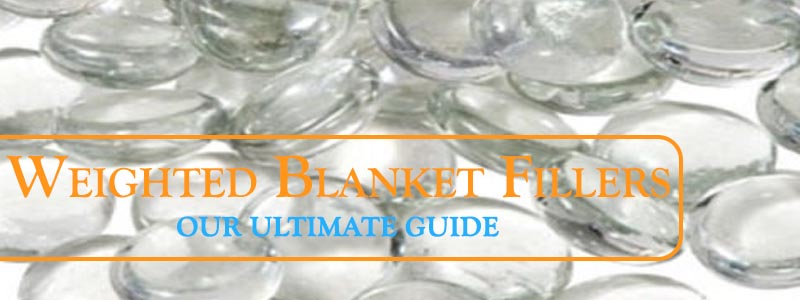
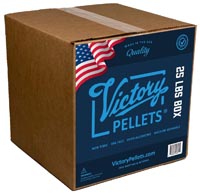
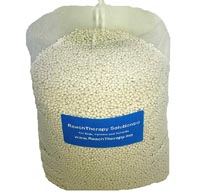
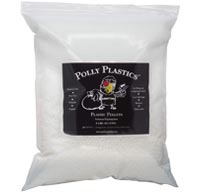


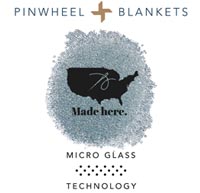
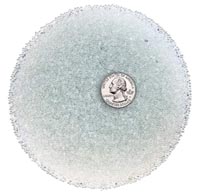
Larry, this is very useful, thank you!
I am having a hard time finding glass beads in my country. I could only find glass that is used for sanding in the auto industry and their size is 200-300 microns (0.2-0.3 mm I think) and I’m not sure if they’re too small..?
Hi Anamaria, thank you for the kind words.
To be honest I wouldn’t risk it – they do sound a bit too small and they might slip between the fabric threads and “leak” out.
See if you can replace them with plastic – should be OK as long as it is disposed of responsibly.
Tx for such a comprehensive evaluation
Anamaria,
Depending on what country you live in, look for a chemical distributor near you. Glass beads are commonly sold to paint and plastic manufacturers and are sold in 20-50lb bags. Pricing would be much lower than what you would find in craft store, you will get MSDS/SDS for the product. Explain to the distributor that you are looking to make weighted blanket with indirect skin contact. They will be able to source proper bead (same as what is sold to craft store, you may even be introducing them to new market).
JT
Hi Larry,
I have a weighted blanket with glass beads and I was wonder if over time of them rubbing against eachother can the crack or shatter in the balnket and fall out of it? I am diabetic and have to be very careful with my feet not getting cut. Do you have any input on this question?
Thanks,
Ramona
I see blankets with ceramic beads which they claim are cooler than glass. Can you please review those? Thank you!
Glass beads can also chip and become damaged, When they do, the sharp edges created from fracturing can and do cut through both fabric and thread and eventually produce a pile of glass sand, if your lucky, on the floor…if not so lucky in your washing machine or dryer.
Before anyone suggests that they wouldn’t have sharp edges .. guess what industry is the biggest user of glass beads … it’s not the weighted blanket industry… it’s the abrasives industry .. think paint and rust stripping.